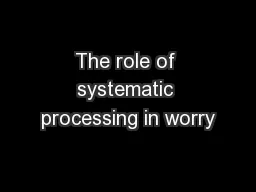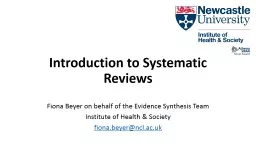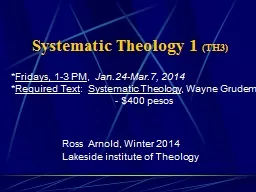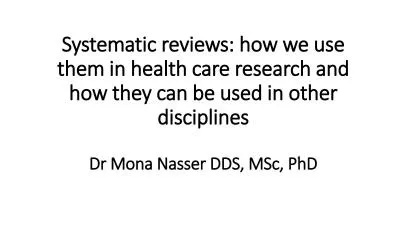PPT-The role of systematic processing in worry
Author : debby-jeon | Published Date : 2018-01-16
Dr Suzanne Dash sdashsussexacuk MARS Mood and Anxiety Research in Sussex Outline Worry Heuristic Systematic Model What is systematic processing When does it happen
Presentation Embed Code
Download Presentation
Download Presentation The PPT/PDF document "The role of systematic processing in wor..." is the property of its rightful owner. Permission is granted to download and print the materials on this website for personal, non-commercial use only, and to display it on your personal computer provided you do not modify the materials and that you retain all copyright notices contained in the materials. By downloading content from our website, you accept the terms of this agreement.
The role of systematic processing in worry: Transcript
Download Rules Of Document
"The role of systematic processing in worry"The content belongs to its owner. You may download and print it for personal use, without modification, and keep all copyright notices. By downloading, you agree to these terms.
Related Documents







![[22] Then Jesus said to his disciples:](https://thumbs.docslides.com/584870/22-then-jesus-said-to-his-disciples-therefore-i-tell-yo.jpg)






